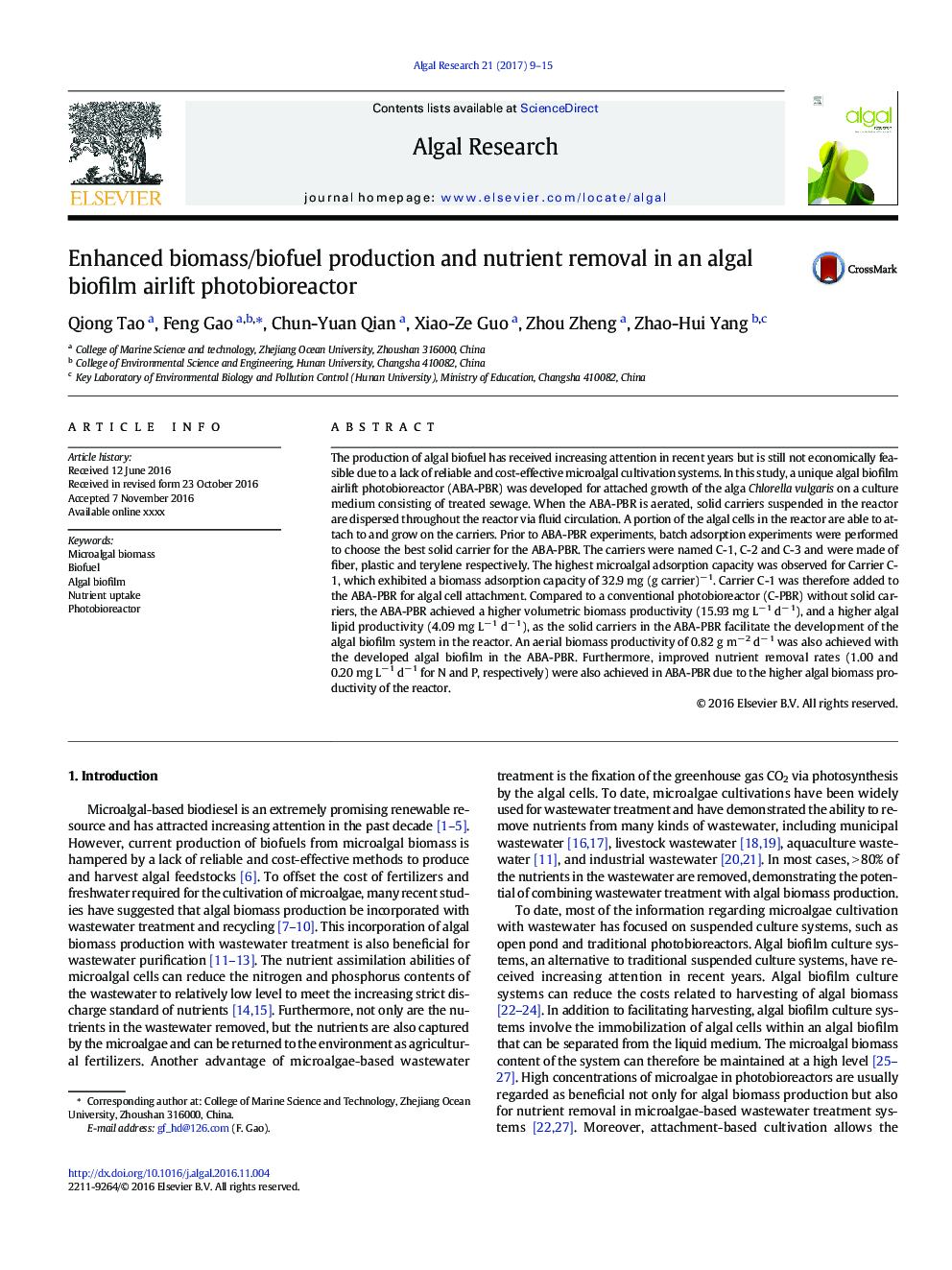| Article ID | Journal | Published Year | Pages | File Type |
|---|---|---|---|---|
| 5478493 | Algal Research | 2017 | 7 Pages |
Abstract
The production of algal biofuel has received increasing attention in recent years but is still not economically feasible due to a lack of reliable and cost-effective microalgal cultivation systems. In this study, a unique algal biofilm airlift photobioreactor (ABA-PBR) was developed for attached growth of the alga Chlorella vulgaris on a culture medium consisting of treated sewage. When the ABA-PBR is aerated, solid carriers suspended in the reactor are dispersed throughout the reactor via fluid circulation. A portion of the algal cells in the reactor are able to attach to and grow on the carriers. Prior to ABA-PBR experiments, batch adsorption experiments were performed to choose the best solid carrier for the ABA-PBR. The carriers were named C-1, C-2 and C-3 and were made of fiber, plastic and terylene respectively. The highest microalgal adsorption capacity was observed for Carrier C-1, which exhibited a biomass adsorption capacity of 32.9 mg (g carrier)â 1. Carrier C-1 was therefore added to the ABA-PBR for algal cell attachment. Compared to a conventional photobioreactor (C-PBR) without solid carriers, the ABA-PBR achieved a higher volumetric biomass productivity (15.93 mg Lâ 1 dâ 1), and a higher algal lipid productivity (4.09 mg Lâ 1 dâ 1), as the solid carriers in the ABA-PBR facilitate the development of the algal biofilm system in the reactor. An aerial biomass productivity of 0.82 g mâ 2 dâ 1 was also achieved with the developed algal biofilm in the ABA-PBR. Furthermore, improved nutrient removal rates (1.00 and 0.20 mg Lâ 1 dâ 1 for N and P, respectively) were also achieved in ABA-PBR due to the higher algal biomass productivity of the reactor.
Related Topics
Physical Sciences and Engineering
Energy
Renewable Energy, Sustainability and the Environment
Authors
Qiong Tao, Feng Gao, Chun-Yuan Qian, Xiao-Ze Guo, Zhou Zheng, Zhao-Hui Yang,
